In this post, I answer common questions about the 6 syllable types and how to teach them. Be sure to grab the FREE syllable type anchor charts and syllable types teaching resources!
The 6 Syllable Types are getting a lot of buzz these days. You’ve likely heard about them from a colleague or literacy coach, Maybe you’ve seen posts about them on social media. But most of us didn’t learn about them in college or in our teacher prep program, so we have a lot of questions.
I know this because I receive messages from teachers who wonder if the 6-syllable types are really something they need to teach their students. They are curious about how to teach them and unsure whether knowing the syllable types will really help their students become stronger readers. If these questions sound familiar, know you are not alone.
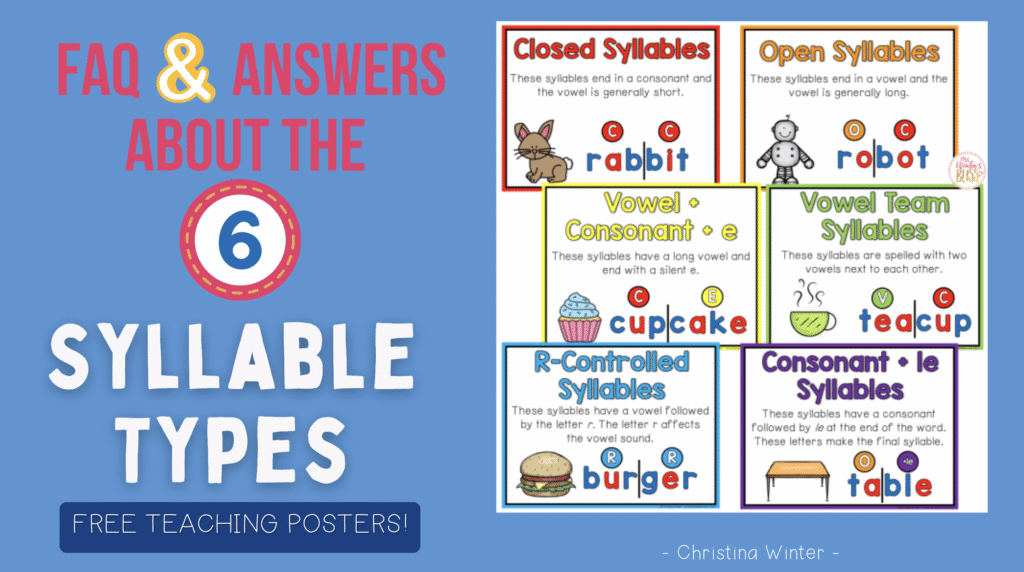
Today, I’m excited to help answer common questions about the 6 syllable types and how to teach them. I’ll explain what they are and how they help our students become stronger readers. Then I’ll leave you with free resources to help you begin teaching the 6 syllable types in your classroom!
1. What are the six syllable types?
1. Closed: These syllables end in a consonant, and the vowel is usually short. This is the most common type of syllable we see in English. Ex: rab–bit

2. Vowel + Consonant + E Syllables: These syllables have a long vowel and end with a silent e. Ex: cup-cake

3. Open Syllables: These syllables end in a vowel and the vowel is generally long. Ex: ro-bot

4. Vowel Team Syllables: These syllables are spelled with two vowels that are next to each other. Ex: tea-cup

5. R-Controlled: These syllables have a vowel followed by the letter r (er, ir, ur, ar, or). The letter r affects the vowel sound. These types of syllables can be difficult for students to master and will likely require continuous review. Ex: bur–ger

6. Consonant + le: These syllables have a consonant followed by -le at the end of the word. If a C-le syllable is combined with an open syllable — as in cable, you do not double the consonant. If one is combined with a closed syllable — little — you double the consonant.

2. Why should I teach the syllable types?
Students need to be taught an explicit strategy for breaking longer words into manageable parts. Without one, they may become easily intimidated by longer words, guess at them, or even skip them. When students can recognize these patterns, they’re more equipped to decode multisyllabic words.
Familiarity with syllable-spelling conventions helps students know if a vowel is long, short, a diphthong, r-controlled, or whether endings have been added. When a student is familiar with syllable patterns, they can decode multisyllabic (longer) words more accurately and fluently.
3. When should I start teaching syllable types?
Many people think that syllable types instruction isn’t just for advanced readers or upper elementary students. They’re a foundational part of structured literacy. Students can begin learning closed syllables as soon as they’ve mastered CVC words and are ready to tackle longer words with more than one syllable.
Here’s a general progression that works well in K–2:
- Kindergarten: Exposure to closed and open syllables in simple words
- 1st Grade: Formal instruction in closed, open, VCe, and vowel team
- 2nd Grade: Reinforce previous types and introduce r-controlled and consonant + le
The key is to introduce them gradually and systematically, building on what students already know.
4. What order should I teach the 6 syllable types in?
While there’s no one “perfect” order, we recommend this progression that follows our Science of Reading-aligned phonics scope and sequence:
- Closed (short vowel, VC/CVC)
- Open (long vowel, V/CV)
- Vowel-Consonant-e (VCe)
- Vowel Teams (ai, ee, oa, etc.)
- R-Controlled (ar, er, ir, or, ur)
- Consonant + le (found in multisyllabic words)
This order builds from the most frequent and accessible syllable types to the more complex. It also mirrors what students typically encounter in reading and writing.
Syllable Types Resources
FREE Syllable Types Anchor Charts
Anchor charts and visual reminders are so helpful—especially for young learners. These Syllable Type Posters, with examples and a short definition, can be used for whole group instruction, posted in your classroom, or used for small group instruction.

Drop your email below to get these syllable types teaching posters instantly!
Syllable Types and Syllable Division Activities
Ready to bring syllable type instruction to your classroom? This syllable types and syllable division resource comes with everything you need to teach your students how to attack longer words with confidence!

First, you’ll get digital teaching slides designed for explicit whole-group instruction. These slides introduce students to each of the syllable types and allow you to explicitly model and practice together how to break words up and identify the type.
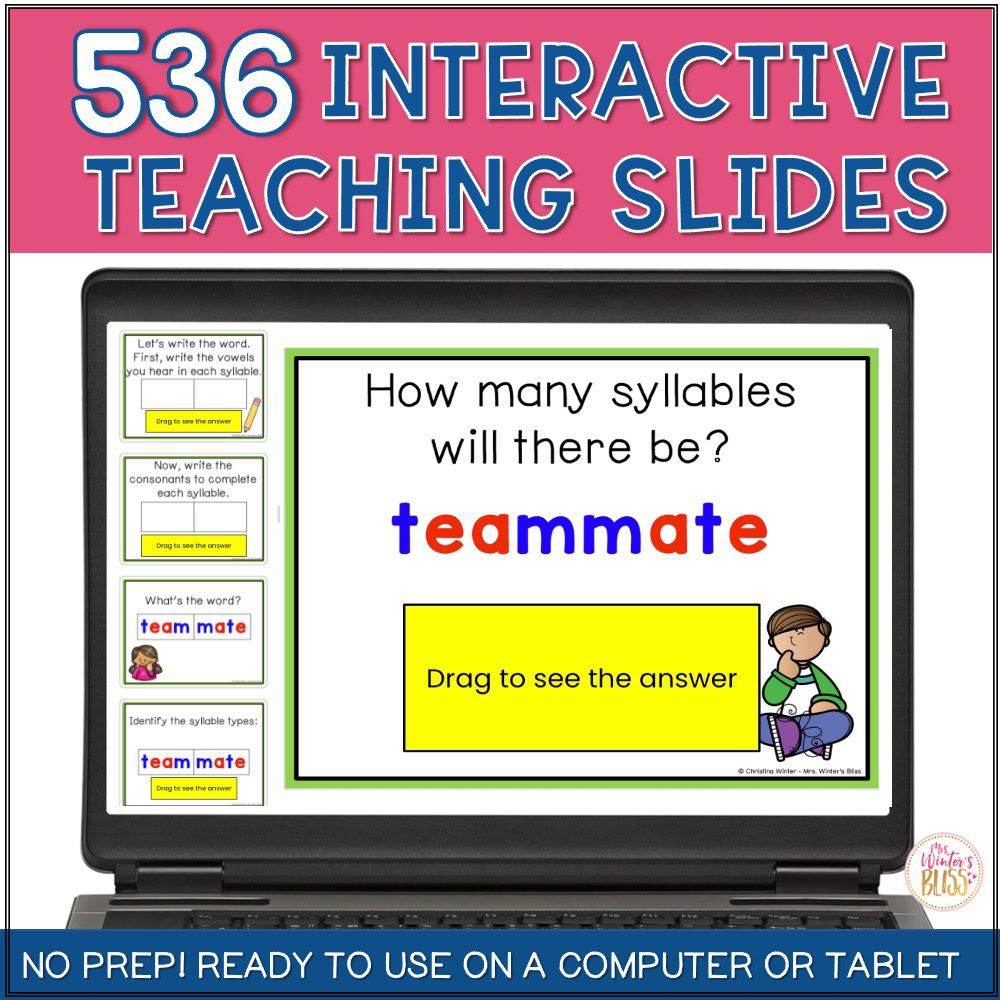
Next, you get small group practice activities to help your students master the six syllable types.
PRO TIP: Print the activities just once and use a sheet protector that students can write and erase as you lead them through the routine of identifying the vowels, number of syllables, and dividing the syllables of each word.
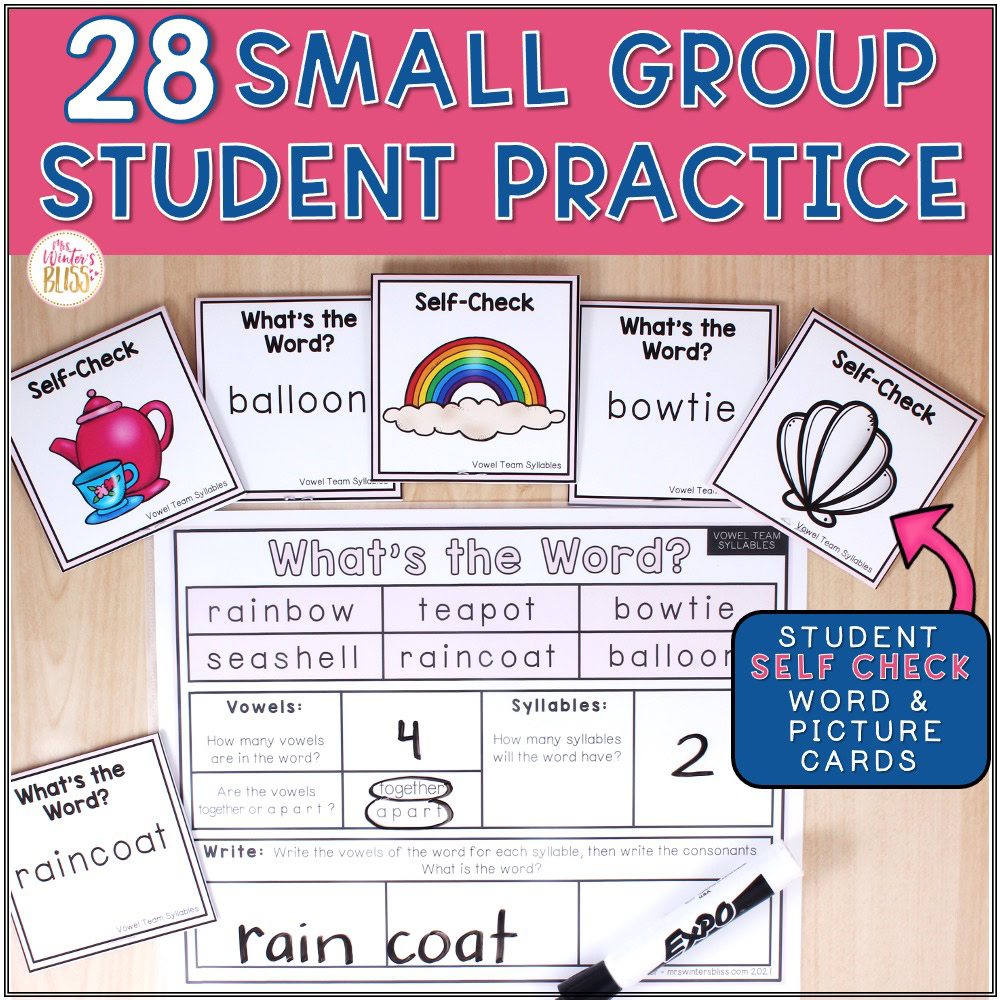
Students receive more independent practice using the interactive, NO PREP digital slide activities.
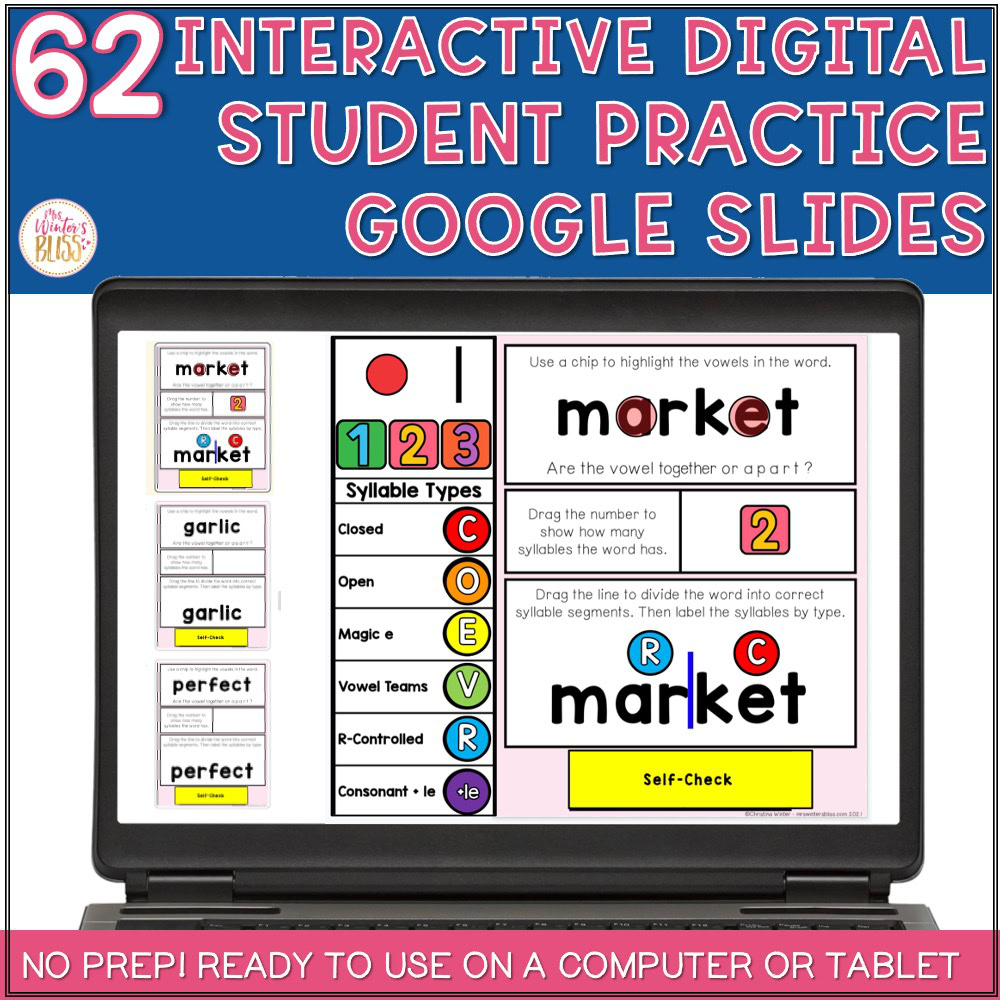
The syllable types printables provide students with independent practice decoding one syllable, two syllable, and three syllable words. They are perfect for independent practice, centers and small group instruction!
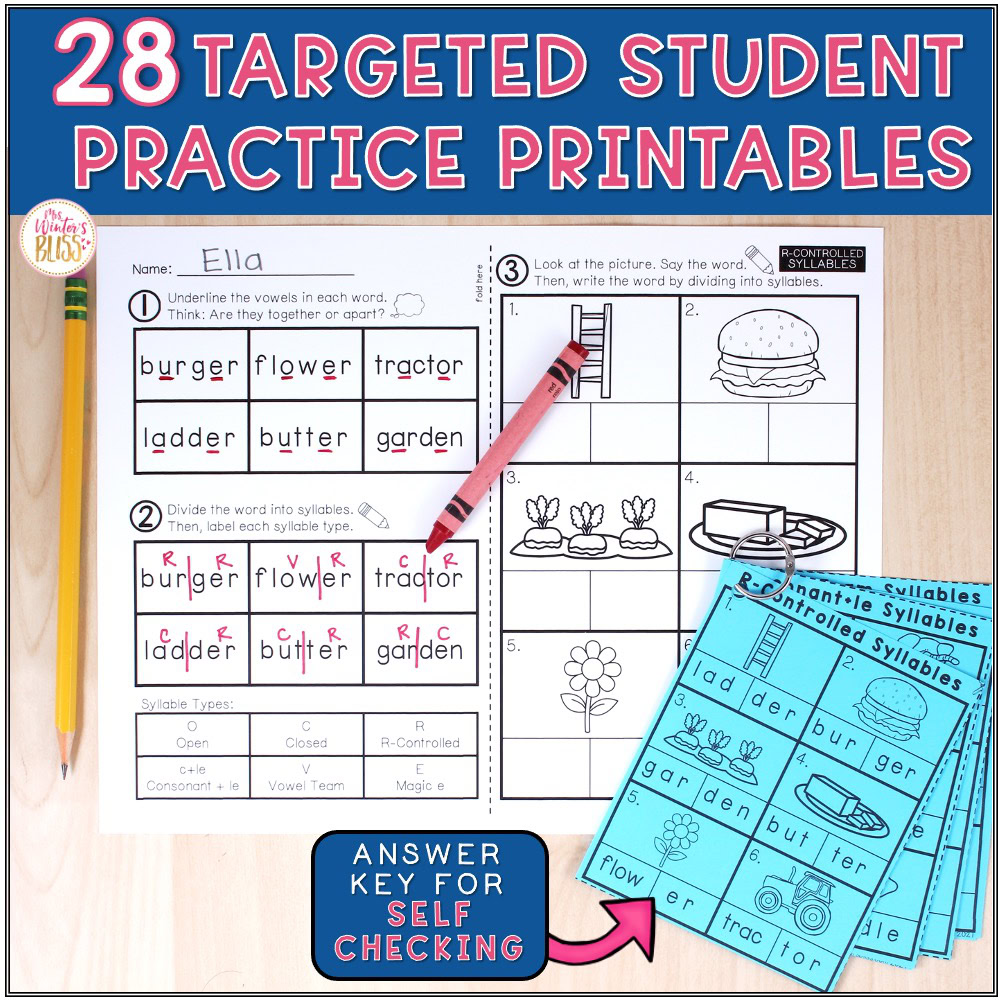
FREE Syllable Types Activities
To help get you started, I’m happy to share this FREE Syllable Types Resource!
This resource is a sample of the full resource. It includes both printable and digital teaching slides, as well as printable and digital activities for students. It makes a perfect literacy center or independent activity!
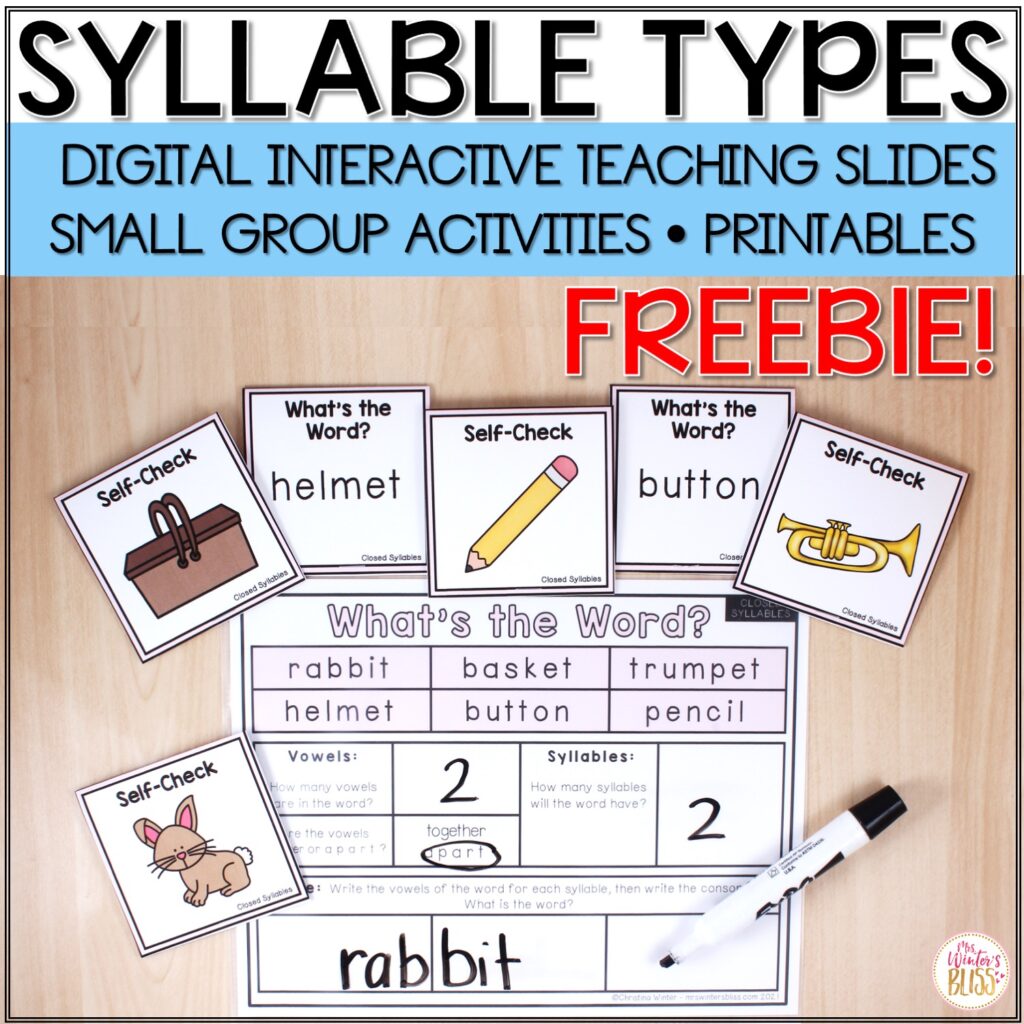
Syllable types are a powerful decoding tool. When you teach them explicitly and systematically, your students gain confidence, fluency, and the skills they need to read longer, more complex words.
I hope the information and resources I’ve shared here today will help to bring this meaningful practice into your classroom.

